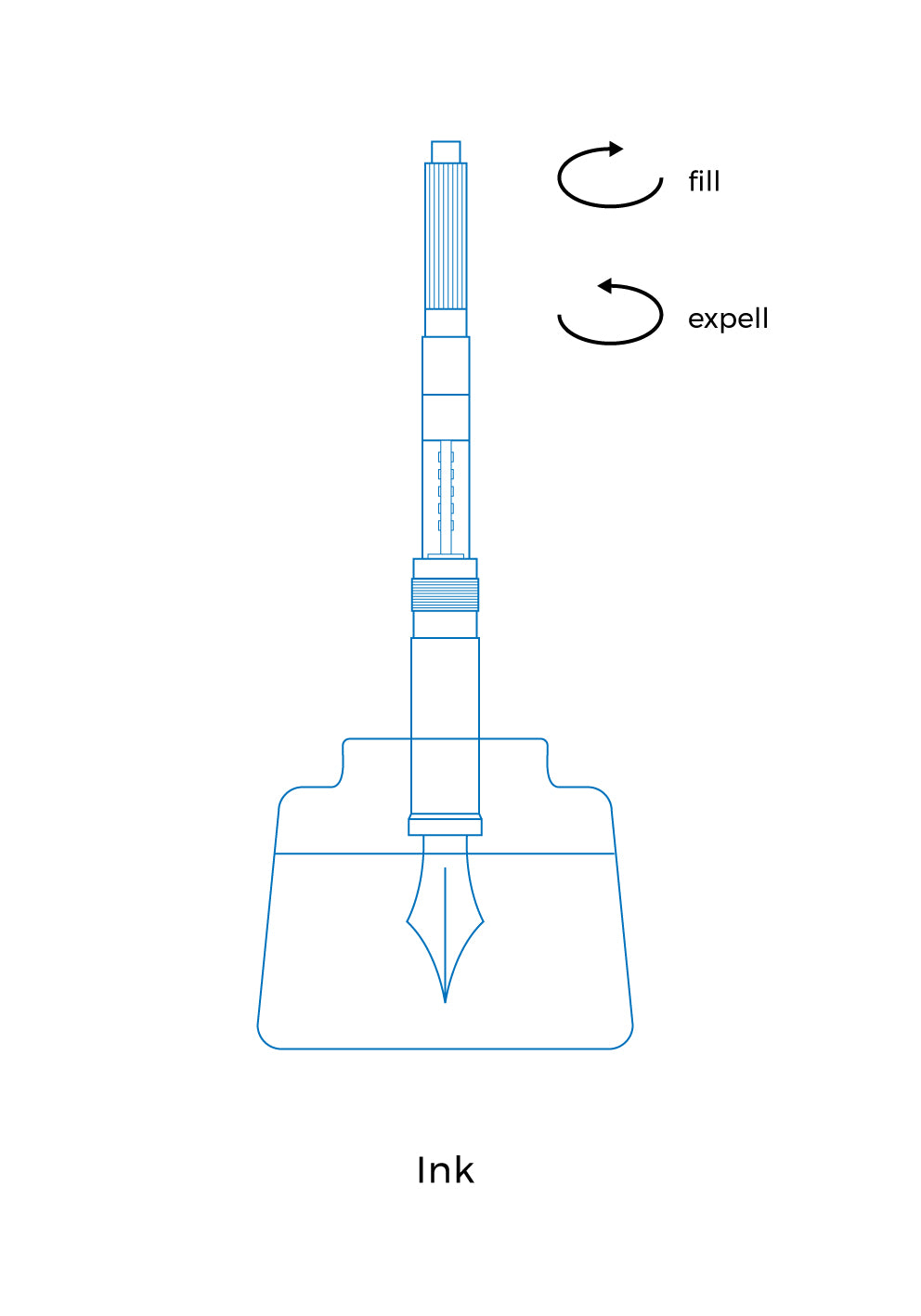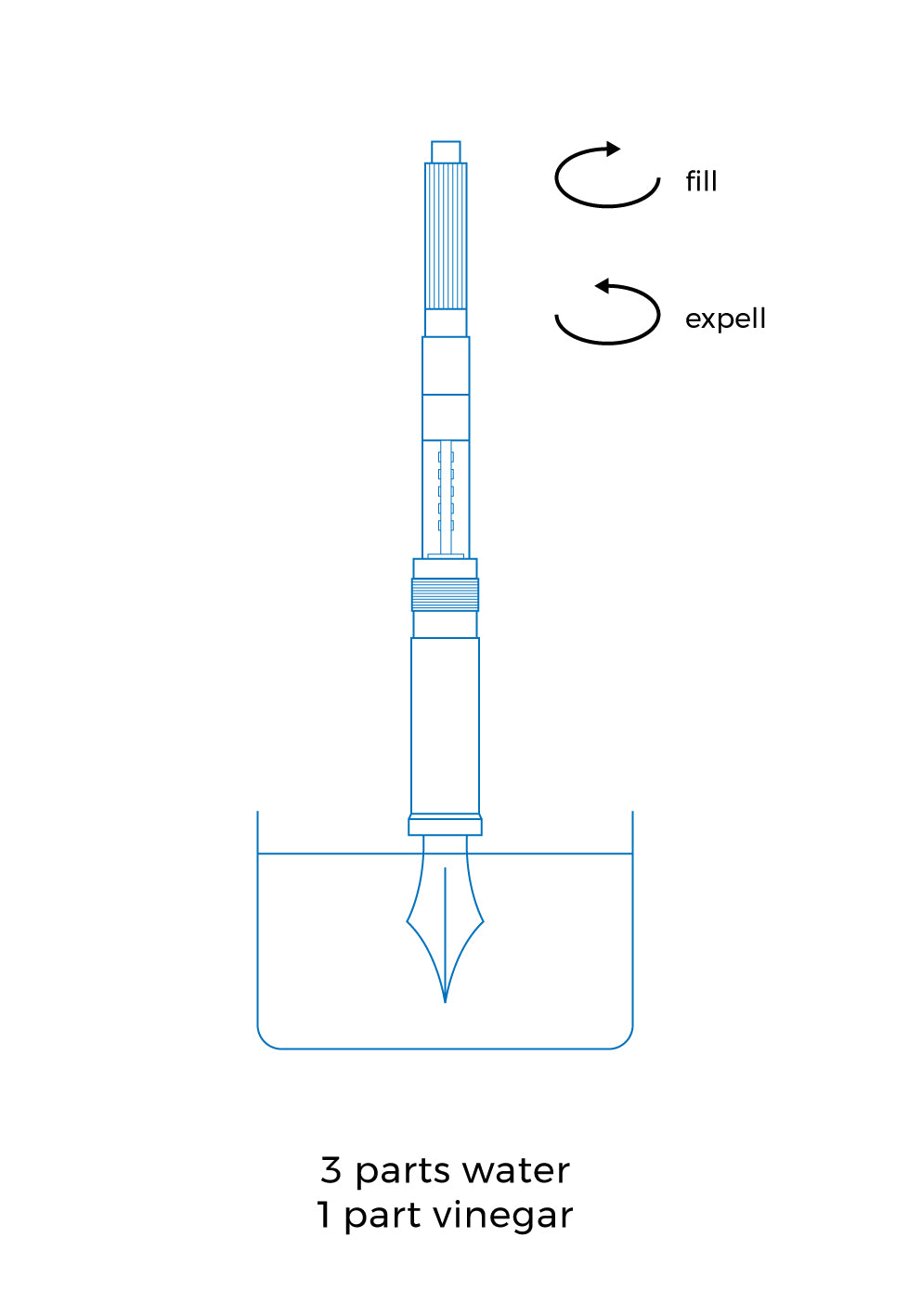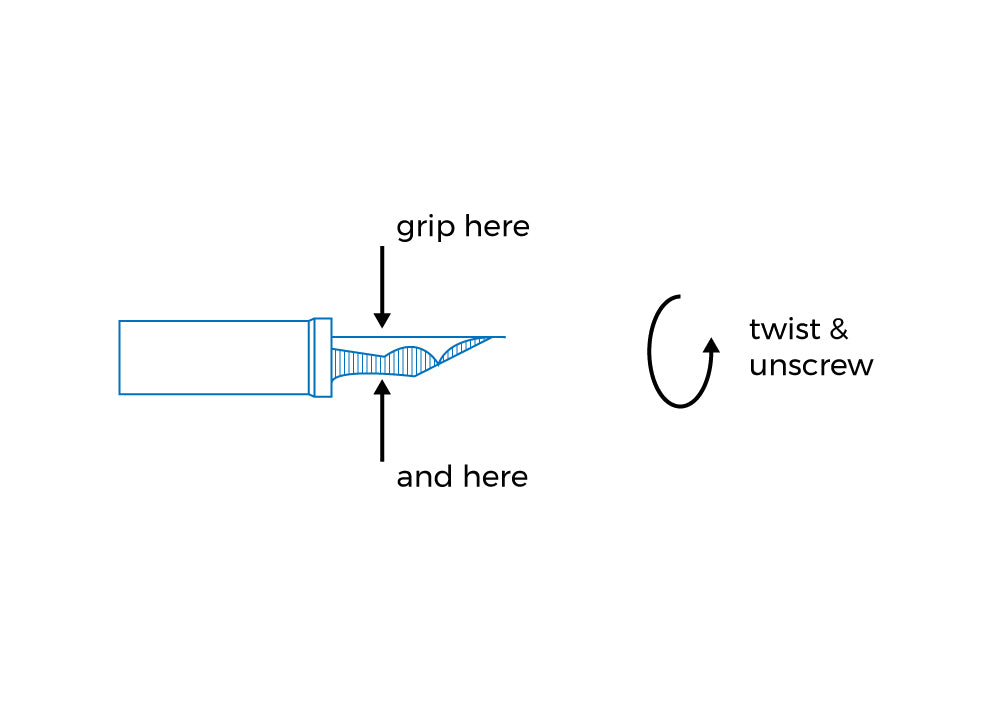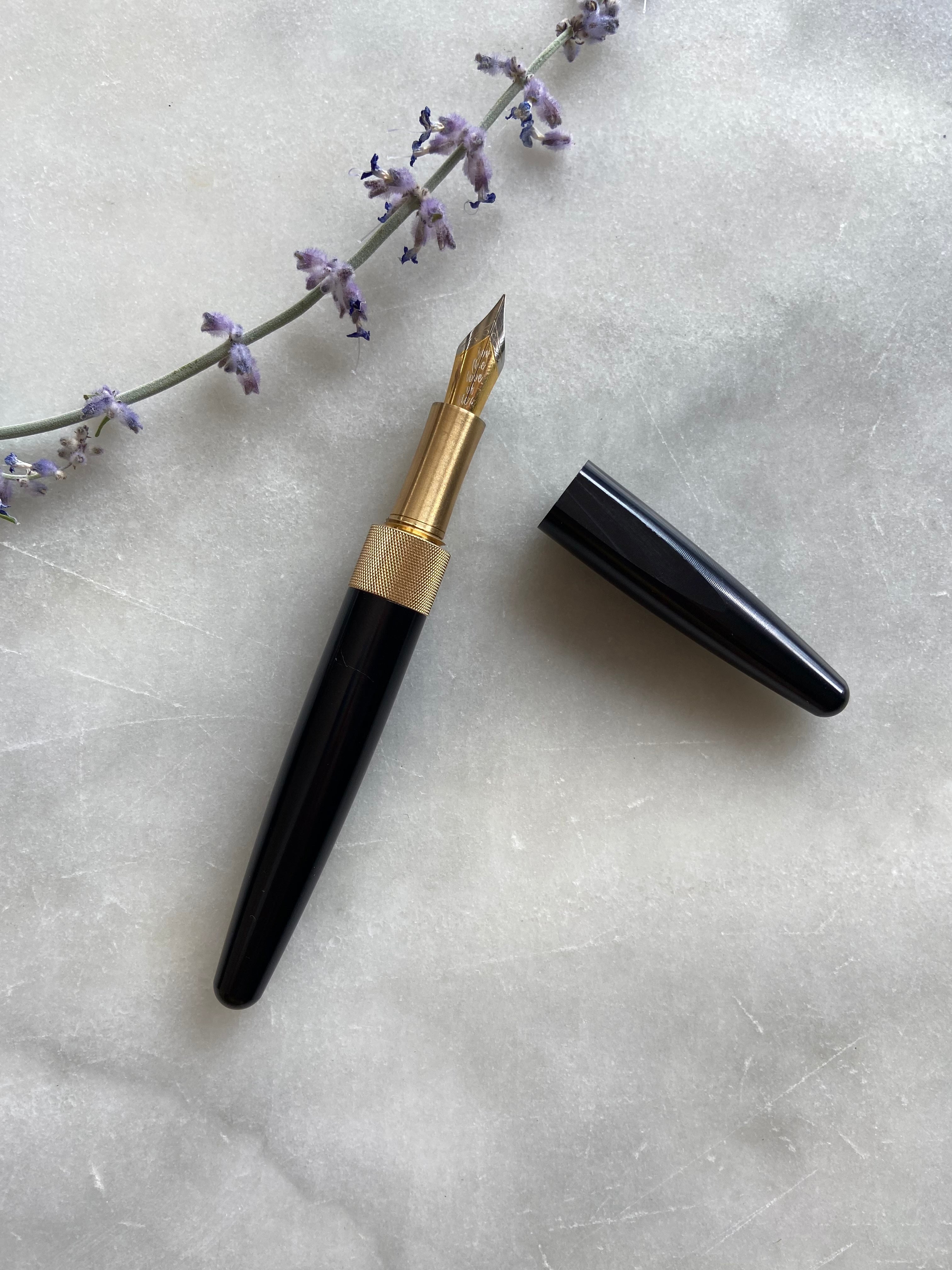Looking after your pen
Parts of your pen

How to fill your pen

- Unscrew the pen body (this is called the barrel).
- Ensure the cartridge converter is engaged with the nib unit - pull it out and gently but firmly push it in until you feel it engage.
- Rotate the cartridge converter screw anti-clockwise until the piston is all the way down.
- Insert the nib into the ink bottle (until it is almost fully submerged).
- Rotate the cartridge converter screw clockwise and you will start to see the ink drawing up into the converter.
- Rotate all the way to the top (or you can partially fill if you prefer).
- To get a really full fill, rotate the cartridge converter screw anti-clockwise (with the nib still submerged) to expel the ink and then clockwise to draw up ink again. Repeat a couple of times until fully filled.
- Carefully wipe the nib with a folded up tissue (so you don't get inky fingers!)
- Replace the barrel and cap and you're good to go!
Collapsible content
Top tip
Don't leave your ink bottle uncapped for any length of time. That’s just an accident waiting to happen. Cleaning up ink spills is the worst (we speak from experience!!)
If the converter is not filling
- Check to ensure the nib is almost fully submerged into the ink.
- Check that the converter is fitted tightly onto the back of the nib unit (pull it out and pop it back on).
How to clean your pen
It’s best not to leave ink in your pen if it’s going to be unused for more than a week.
When the pen’s not used for a while, ink may dry in the nib unit, clogging the feed and preventing your pen from writing properly.
It’s good practice to flush out your pen with water before storing it unused and also between fillings. This is quick and easy to do.
To flush your pen with water:
- Unscrew the cap.
- Unscrew and remove the barrel.
- Fill a glass with warm (body temperature) clean water (tap water is fine) - at a pinch cold water is fine too.
- Dip the nib into the glass until it is fully submerged in the water.
- Rotate the cartridge converter screw anti-clockwise to push the piston down and expel any unused ink into the glass of water.
- Next, rotate the screw clockwise to draw water through the nib unit and fully fill the converter.
- Repeat this process 3-4 times or until the water expelled from the nib is clear (no more ink).
- Remove your pen and leave to dry or carefully pat dry with a clean cloth or paper towel, paying attention to the feed.
This is usually enough to clean your pen - particularly if you do this regularly and don’t leave the pen inked up and unused for long.
If your pen is clogged

- You can repeat the flushing process with pen cleaning fluid or a 3:1 mix of warm water and plain white cooking vinegar (3 parts water to 1 part vinegar).
- After this flush the pen with water and dry before inking up again.
In extreme cases, if the pen is clogged badly, you may not be able to get the nib unit out of the section. Try soaking both in the pen cleaning fluid or the water and vinegar solution for a couple of hours. You could even try 2 parts water to 1 part vinegar in this case.
How to remove the nib unit
(It’s best to do this after you’ve cleaned the pen, and before you refill it with ink to avoid making an inky mess!)

- Flush the pen with clean tap water.
- The nib unit consists of the nib, the feed and a threaded housing.
- Fold a scrap cloth or tissue over the nib.
- Gently hold the nib and feed between your thumb and index finger (thumb on the top of the nib, index finger on the feed).
- Don't hold the nib from the sides.
- Rotate anti-clockwise to unscrew the nib unit and remove it from the section.
- If you haven’t cleaned your pen in a while, the nib unit could be stuck (usually due to some dried up ink). Don’t worry, this is usually easy to sort. Follow our instructions for how to clean your pen to give it some love.
Our optional polymer feeds
Our polymer feeds are designed in-house and manufactured to our specification. They have a hydrophilic surface layer that 'absorbs' ink. Since they are white, they also take on the colour of the ink you're using, which is a fun touch. When you change inks, flush the pen through with water a few times. Some inks will stain the feed, so it may not go fully back to white when you flush it. This is normal, and will not affect usage or impact ink colour on the paper.
Caring for your Pen
Our fountain pens are designed and manufactured with care and built to last. Looking after them is pretty easy.
Always keep your pen capped
This not only protects the nib should your pen take a tumble, but also prevents ink from drying out in the feed. This way, your pen will start writing the moment you put nib to paper.
Keeping your pen looking good
The cap and barrel of our pen is made of anodised aluminium. It's a pretty solid material, but can get scratched and dinged in extreme circumstances. That doesn’t detract from function, but if you want to be extra careful, don’t store your pen with other metal or hard and sharp objects and try not to drop it.
The grip section of our pen is made of brass. This will naturally age over time, forming a lovely patina that’s unique to each pen. If you prefer, it’s easy to restore brass to its original shiny self. Any over the counter brass polish and a soft clean cloth will do the trick. Equally effective, using kitchen science, apply a thick paste of baking soda and lemon juice to the brass. Leave for 5-10 minutes and wipe clean.

The Good Blue recommends
- Only use fountain pen inks in your pen.
- Do not use acrylic, India inks or calligraphy inks that contain shellac. These inks have particulate matter that will clog up your pen.
- Avoid using shimmering inks or metallic inks even if they are fountain pen safe. These inks have suspended particles in them that may clog your pen. If you do use these inks please flush and clean your pen immediately after - don't leave these inks in the pen for more than a day or two.
- Low viscosity ‘wet’ inks that have high surface tension will give the best flex results. You can look on popular ink review websites for ‘wet inks’ to find ones in your favourite colour or brand.
